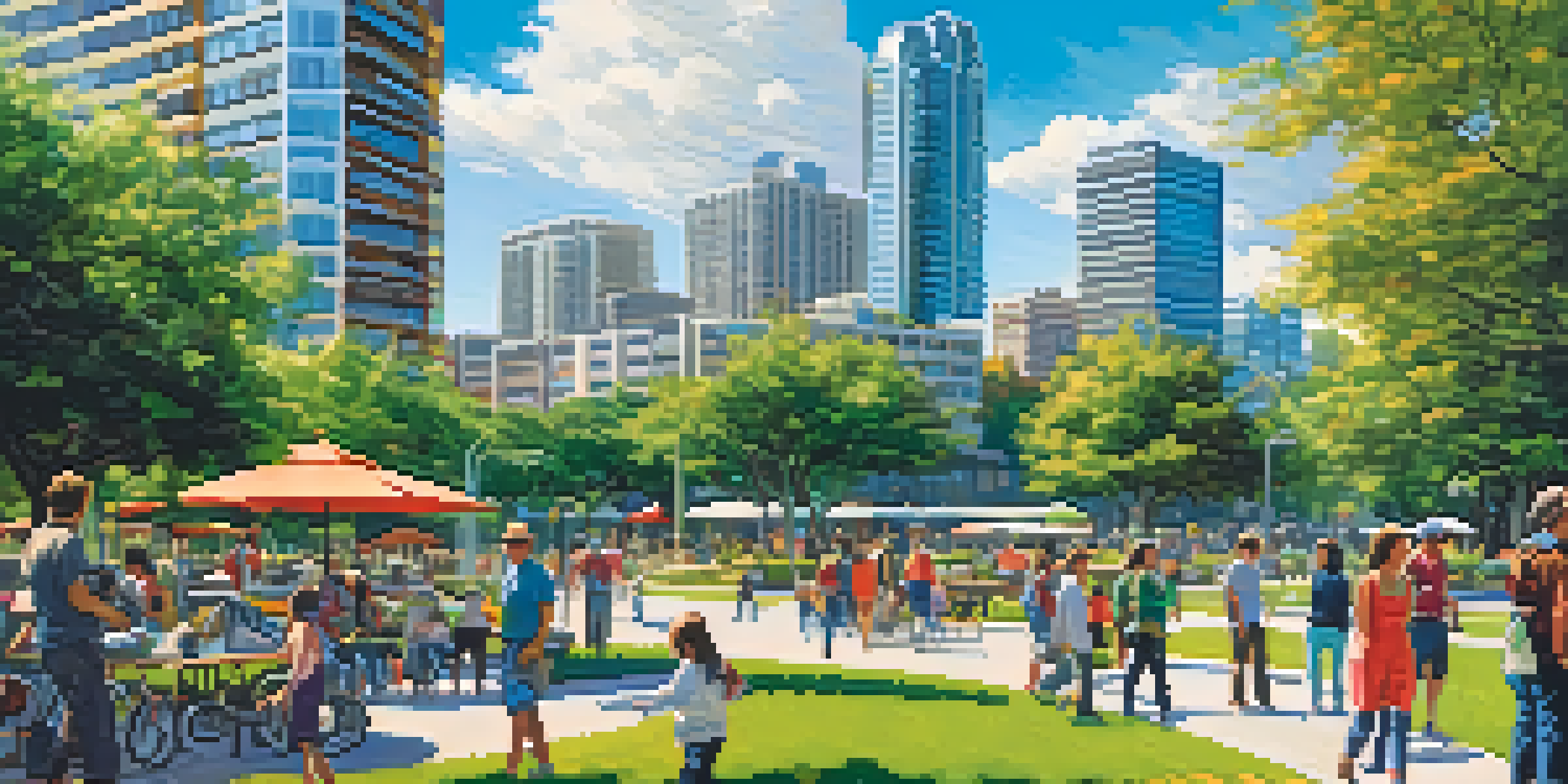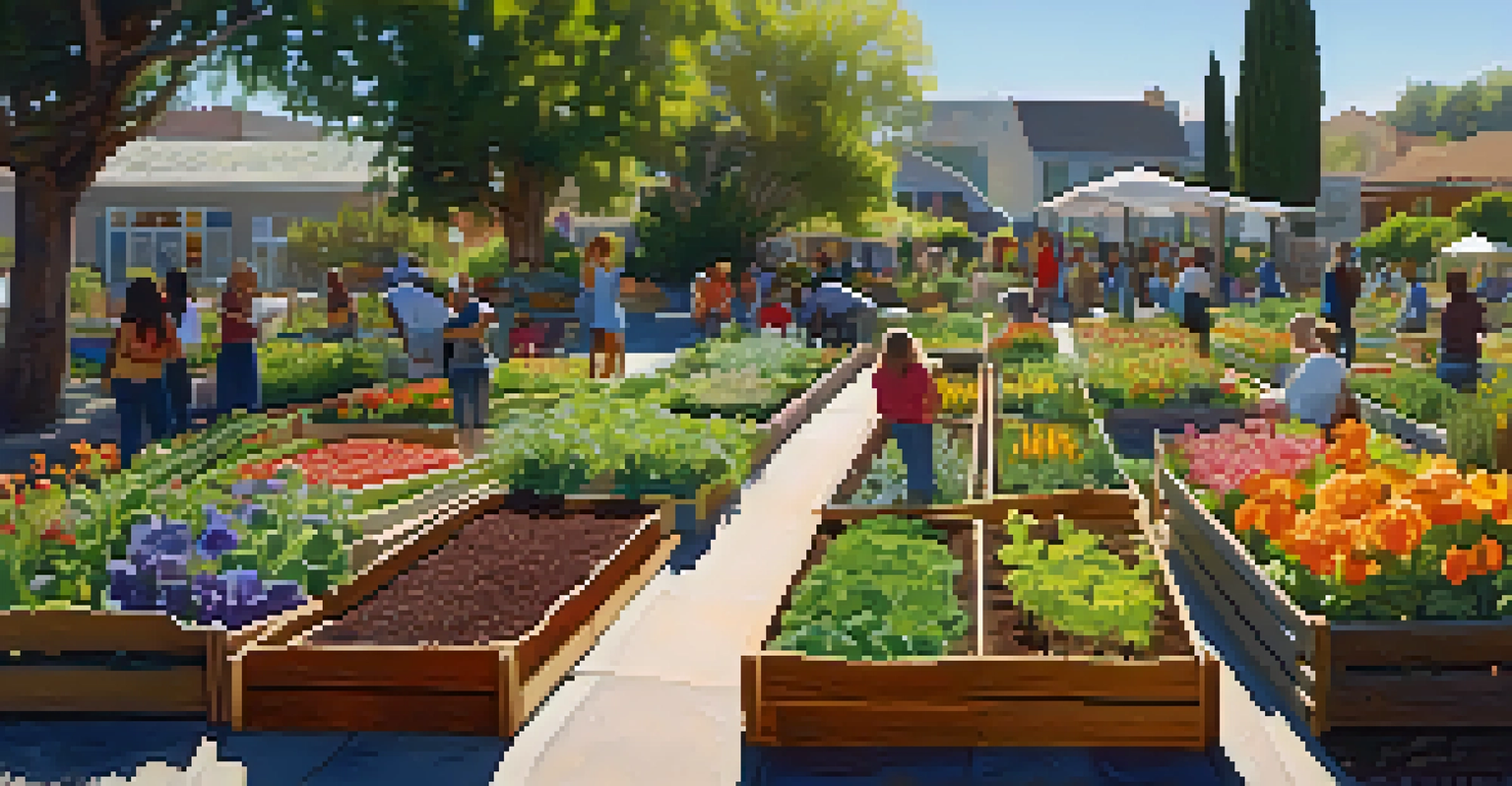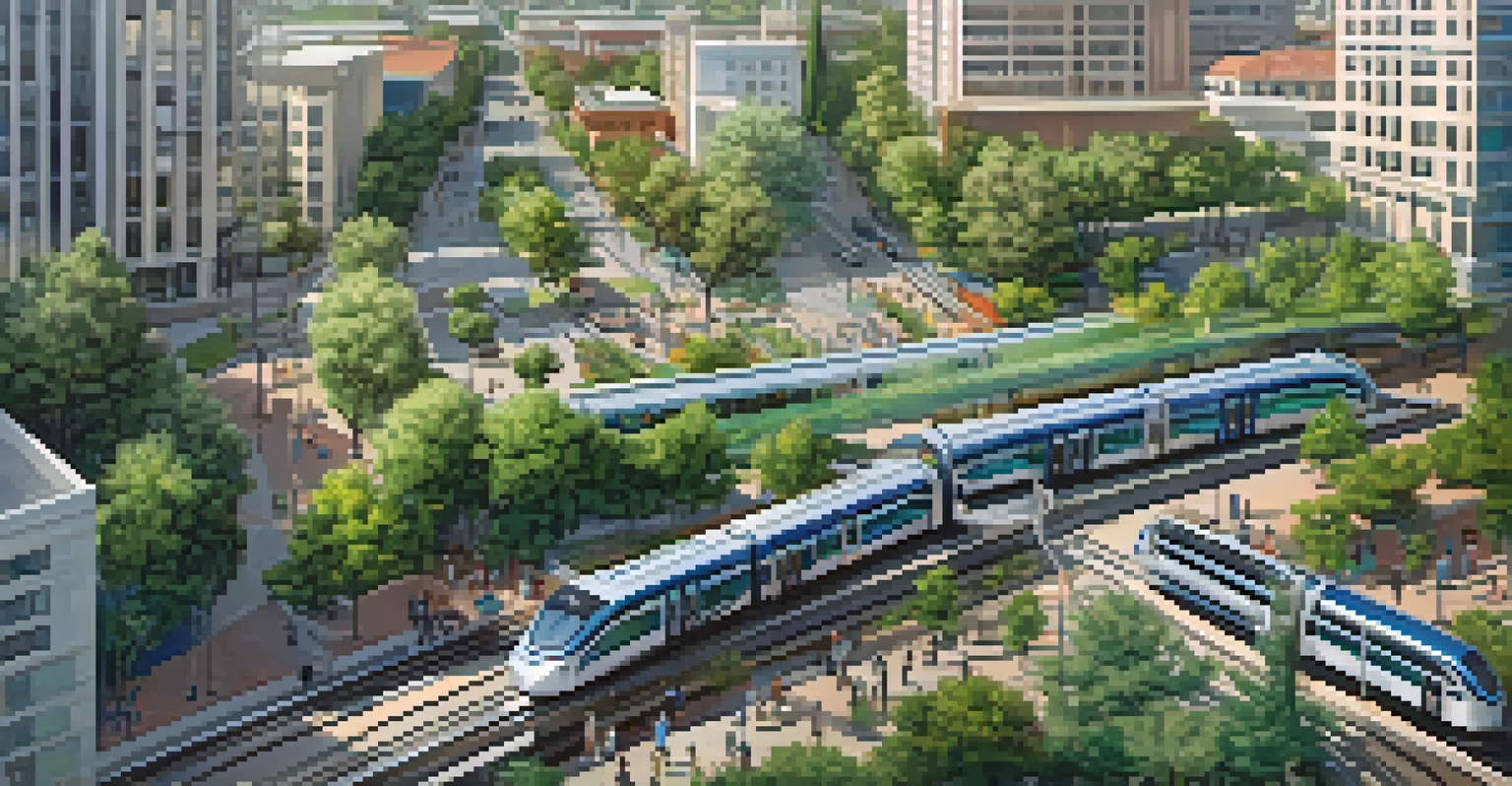Future of San Jose: Balancing Growth and Environmental Health

Understanding San Jose's Current Growth Landscape
San Jose has experienced rapid growth over the last few decades, transforming from a sleepy agricultural hub into a bustling tech powerhouse. This evolution has brought economic opportunities but also challenges, particularly in maintaining the balance between urban development and environmental conservation. As the population continues to rise, city planners are facing tough decisions on how to accommodate new residents while preserving the natural beauty of the region.
The environment is where we all meet; where we all have a mutual interest; it is the one thing all of us share.
The city's growth is largely driven by the tech industry, which attracts talent and investment from all over the world. However, this influx has led to increased traffic, higher housing costs, and greater demand for infrastructure. Residents often find themselves caught in a tug-of-war between wanting to see their city thrive and the need to protect local ecosystems and green spaces.
In response to these challenges, San Jose has begun implementing policies aimed at sustainable development. These include promoting mixed-use developments, enhancing public transportation, and prioritizing green building practices. By fostering a more integrated approach to growth, the city hopes to create a more livable environment for all.
The Importance of Environmental Health in Urban Planning
Environmental health is crucial for the well-being of a community, influencing everything from air quality to access to green spaces. In urban settings like San Jose, where concrete dominates, ensuring that nature is preserved becomes vital for residents' physical and mental health. Studies have shown that access to parks and natural areas can reduce stress and enhance quality of life.

Moreover, urban sprawl often leads to habitat destruction, which can have dire consequences for local wildlife and biodiversity. Protecting these ecosystems is essential not just for the animals that inhabit them but also for the overall health of the environment. A balanced approach to growth can mitigate negative impacts and promote a thriving urban ecosystem.
Balancing Growth and Conservation
San Jose is seeking to accommodate rising population demands while preserving its natural ecosystems through sustainable urban planning.
The city is increasingly recognizing the need to incorporate environmental considerations into its planning processes. This means not just protecting existing green spaces but also creating new ones, such as community gardens and urban parks. Engaging residents in these initiatives fosters a sense of ownership and responsibility towards their environment.
Innovative Solutions for Sustainable Urban Growth
To address the challenges of growth while protecting the environment, San Jose is exploring innovative solutions. One example is the concept of 'smart growth,' which emphasizes compact, walkable communities that reduce the reliance on cars. This approach can lower carbon emissions and promote healthier lifestyles, as residents are encouraged to bike or walk instead of driving.
Sustainability is about how you can create a better world for everyone, and that starts with the community.
Additionally, technology plays a pivotal role in shaping the future of urban planning. From smart traffic management systems to green building technologies, these advancements can significantly reduce the environmental footprint of new developments. By leveraging technology, San Jose can create a more efficient and sustainable urban landscape.
The city is also prioritizing community involvement in these discussions. Engaging residents in the planning process ensures that diverse voices are heard and that development reflects the community's values. This collaborative approach not only empowers citizens but also leads to more sustainable and accepted outcomes.
The Role of Public Transportation in Sustainable Growth
Public transportation is a cornerstone of sustainable urban development, and San Jose is working to enhance its transit system. By improving access to buses, light rail, and other forms of public transit, the city can reduce traffic congestion and lower greenhouse gas emissions. With a more efficient transit network, residents are more likely to choose public transportation over driving, leading to a cleaner environment.
Moreover, investing in public transportation creates jobs and stimulates the local economy. As more people opt for transit, businesses benefit from increased foot traffic, and the city can allocate resources to other essential services. This interconnectedness highlights the importance of transportation in shaping not just the environment, but also the community's economic health.
Community Engagement is Vital
Involving residents in environmental initiatives fosters a sense of ownership and leads to more effective sustainability efforts.
San Jose is also exploring options like bike lanes and pedestrian-friendly infrastructure, making it easier for residents to navigate the city without a car. These initiatives promote a healthier lifestyle and further contribute to reduced emissions. The city’s commitment to sustainable transportation reflects a broader trend towards greener urban living.
Community Engagement in Environmental Initiatives
Community engagement is key to the success of environmental initiatives in San Jose. When residents are involved in decision-making, they are more likely to support and participate in sustainability efforts. The city has launched various programs encouraging residents to voice their opinions and contribute ideas for local environmental projects.
One such initiative is the establishment of community advisory boards that focus on specific environmental issues, such as urban forestry and water conservation. These boards provide a platform for residents to collaborate with city officials, ensuring that diverse perspectives inform policy decisions. This collaborative approach fosters a sense of community ownership over local environmental efforts.
Additionally, educational campaigns focused on sustainability practices can empower residents to make environmentally friendly choices in their daily lives. Workshops, local events, and social media campaigns help disseminate information and inspire action. By fostering a culture of environmental stewardship, San Jose can cultivate a community dedicated to preserving its natural resources.
The Impact of Climate Change on Urban Development
Climate change poses significant challenges for cities worldwide, and San Jose is no exception. Rising temperatures, increased flooding, and droughts are just a few of the issues that can affect urban development. As the city plans for future growth, it must consider these environmental factors to ensure resilience against climate impacts.
For instance, integrating climate adaptation strategies into urban planning can help mitigate risks associated with extreme weather. This might include developing green infrastructure, such as rain gardens and permeable pavements, which can absorb excess rainwater and reduce flooding. By prioritizing climate resilience, San Jose can create a more sustainable urban environment that can withstand future challenges.
Innovative Solutions for Sustainability
The city is exploring smart growth and advanced technologies to create walkable communities and enhance public transportation, reducing its environmental footprint.
Furthermore, addressing climate change requires collaboration across various sectors, including government, businesses, and non-profit organizations. By working together, these stakeholders can develop comprehensive strategies that not only address immediate environmental concerns but also promote long-term sustainability. San Jose’s proactive stance on climate change reflects its commitment to a healthier future.
Envisioning a Sustainable Future for San Jose
As San Jose looks to the future, the vision of a sustainable city is becoming increasingly attainable. By prioritizing environmental health alongside growth, the city can create a vibrant urban landscape that benefits residents and nature alike. This balanced approach holds the promise of a community where people thrive in harmony with their surroundings.
Key to this vision is the continued emphasis on innovative solutions and community involvement. Engaging residents in the planning process helps to ensure that new developments align with the community's values and needs. As more people become aware of the importance of sustainability, they are likely to advocate for practices that protect the environment.

Ultimately, San Jose's success in balancing growth with environmental health will serve as a model for other cities facing similar challenges. By embracing sustainable practices, investing in public transportation, and fostering community engagement, San Jose can pave the way for a brighter, greener future for all its residents.